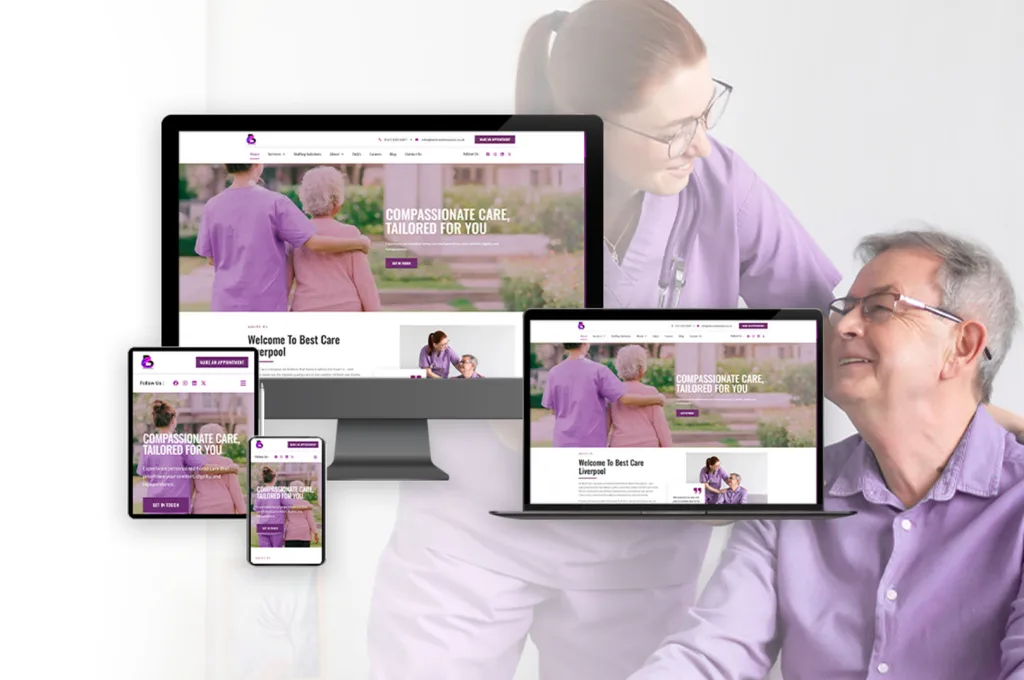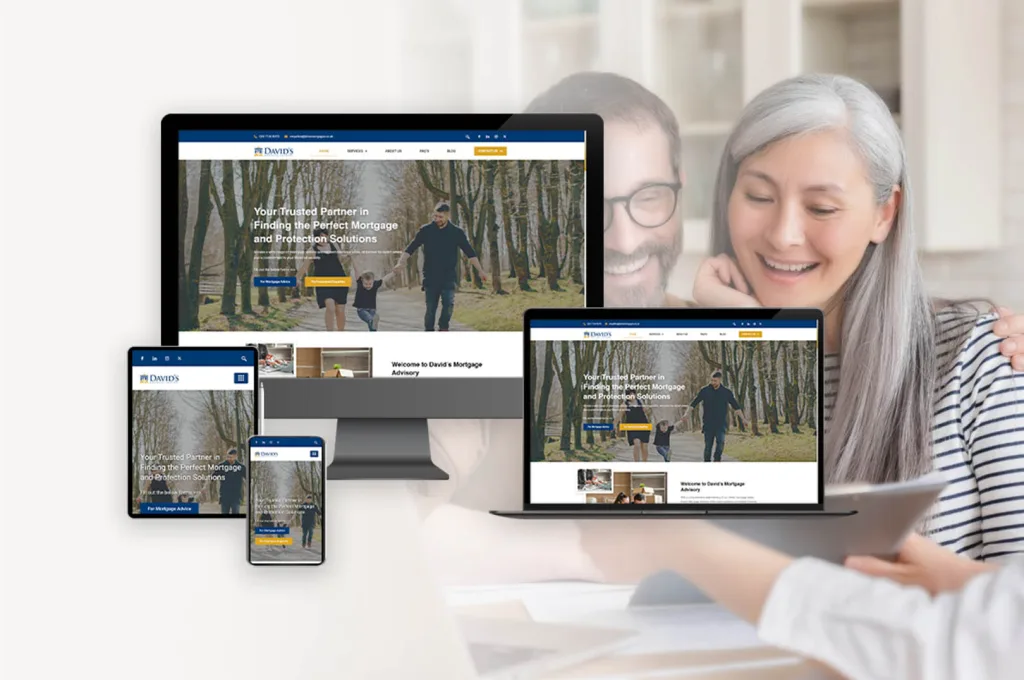The importance of responsive web design for mobile users
Introduction
The importance of responsive web design for mobile users cannot be overstated. With the increasing number of people accessing the internet from their mobile devices, it is essential for businesses to ensure their websites are optimized for mobile users. Responsive web design allows websites to be easily viewed and navigated on any device, regardless of screen size or operating system. Responsive web design also ensures that The importance of responsive web design for mobile users cannot be overstated. With the increasing number of people accessing the internet from their mobile devices, it is essential for businesses to ensure their websites are optimized for mobile users. Responsive web design allows websites to be easily viewed and navigated on any device, regardless of screen size or operating system. Responsive web design also ensures that websites are optimized for search engine rankings, as search engines prioritize mobile-friendly websites. By creating a website that is optimized for mobile users, businesses can ensure that their website is accessible to the widest possible audience

How Responsive Web Design Enhances the Mobile User Experience
Responsive web design (RWD) is an approach to web design that enables websites to provide an optimal viewing experience for users across a wide range of devices, including mobile phones, tablets, and desktop computers. By using RWD, websites can be designed to automatically adjust their layout and content to fit the size and orientation of the device being used. This ensures that users have a consistent experience regardless of the device they are using.
RWD enhances the mobile user experience in several ways. First, it ensures that users can access the same content and features regardless of the device they are using. This eliminates the need for users to switch between different versions of a website, such as a mobile version and a desktop version. This makes it easier for users to find the information they need quickly and efficiently.
Second, RWD ensures that websites are optimized for mobile devices. This means that websites are designed to be easy to navigate and use on smaller screens. This makes it easier for users to find the information they need without having to zoom in or scroll around the page.
Third, RWD ensures that websites are optimized for mobile devices in terms of speed. This means that websites are designed to load quickly on mobile devices, which is important for providing a good user experience.
Finally, RWD ensures that websites are optimized for mobile devices in terms of usability. This means that websites are designed to be easy to use on mobile devices, which is important for providing a good user experience.
Overall, responsive web design enhances the mobile user experience by ensuring that users can access the same content and features regardless of the device they are using, that websites are optimized for mobile devices in terms of navigation, speed, and usability, and that users have a consistent experience regardless of the device they are using.
The Benefits of Responsive Web Design for Mobile Users
Responsive web design (RWD) is an increasingly popular approach to web design that enables websites to be optimized for mobile users. This approach allows websites to be viewed on any device, regardless of size or orientation, and provides a seamless user experience across all platforms. The benefits of RWD for mobile users are numerous and include improved usability, enhanced accessibility, and increased engagement.
Usability is improved for mobile users when a website is designed responsively. Responsive design ensures that the website is optimized for the device being used, allowing for a more intuitive user experience. This means that users can easily navigate the website and access the content they need without having to zoom in or out or scroll horizontally. This improved usability leads to a better overall user experience.
Responsive design also enhances accessibility for mobile users. By optimizing the website for different devices, users with disabilities can access the content more easily. This is especially important for users with visual impairments, as they can access the website without having to zoom in or out. Additionally, responsive design ensures that the website is accessible to users with different operating systems, such as iOS and Android.
Finally, responsive design increases engagement for mobile users. By providing an optimized user experience, users are more likely to stay on the website and interact with the content. This increased engagement leads to more conversions and higher customer satisfaction.
In conclusion, responsive web design offers numerous benefits for mobile users. It improves usability, enhances accessibility, and increases engagement, leading to a better overall user experience. For these reasons, responsive design is an essential part of any successful mobile strategy.
The Impact of Responsive Web Design on Mobile SEO
The impact of Responsive Web Design (RWD) on Mobile SEO is significant. As the number of mobile users continues to grow, it is essential for businesses to ensure their websites are optimized for mobile devices. RWD is a web design approach that allows websites to be optimized for multiple devices, including mobile phones, tablets, and desktop computers.
RWD is beneficial for Mobile SEO because it allows websites to be viewed on any device without the need for separate mobile versions. This eliminates the need for redirects, which can slow down page loading times and negatively impact SEO rankings. Additionally, RWD ensures that all content is accessible on any device, which is important for SEO as search engines prioritize content that is easily accessible.
RWD also helps to improve user experience, which is an important factor for SEO. When users have a positive experience on a website, they are more likely to stay longer and interact with the content. This increases the time spent on the website, which is a key metric for SEO. Additionally, RWD ensures that all content is displayed correctly on any device, which helps to improve user experience.
Finally, RWD helps to improve page loading times, which is another important factor for SEO. When pages load quickly, users are more likely to stay on the website and interact with the content. This increases the time spent on the website, which is a key metric for SEO. Additionally, faster page loading times can help to improve rankings in search engine results pages.
In conclusion, Responsive Web Design has a significant impact on Mobile SEO. RWD eliminates the need for redirects, ensures that all content is accessible on any device, improves user experience, and helps to improve page loading times. All of these factors are important for SEO and can help to improve rankings in search engine results pages
How Responsive Web Design Improves Mobile Accessibility
Responsive web design (RWD) is an approach to web design that enables websites to be optimized for different devices and screen sizes. This approach ensures that websites are accessible and usable on any device, including mobile devices. By using RWD, websites can be designed to provide an optimal viewing experience for users, regardless of the device they are using.
RWD improves mobile accessibility by allowing websites to be designed with a single codebase that can be adapted to different devices. This eliminates the need to create separate versions of a website for different devices, which can be time-consuming and costly. Instead, the same codebase can be used to create a website that is optimized for any device.
RWD also improves mobile accessibility by making websites easier to navigate on mobile devices. By using a flexible grid-based layout, websites can be designed to be responsive to different screen sizes. This ensures that the website is easy to use on any device, as the layout will adjust to fit the device’s screen size.
Finally, RWD improves mobile accessibility by making websites more accessible to users with disabilities. By using semantic HTML and CSS, websites can be designed to be more accessible to users with disabilities. This ensures that users with disabilities can access the website’s content and features, regardless of the device they are using.
In conclusion, responsive web design improves mobile accessibility by allowing websites to be designed with a single codebase, making them easier to navigate on mobile devices, and making them more accessible to users with disabilities. By using RWD, websites can be designed to provide an optimal viewing experience for users, regardless of the device they are using.
The Benefits of Responsive Web Design for Mobile Conversion Rates
Responsive web design (RWD) is an increasingly popular approach to web design that enables websites to be optimized for multiple devices, including mobile phones and tablets. This approach has become increasingly important as more and more people access the internet from their mobile devices. As such, it is essential for businesses to understand the benefits of RWD and how it can help to improve mobile conversion rates.
The primary benefit of RWD is that it allows websites to be optimized for different devices. This means that the website will be displayed correctly on any device, regardless of its size or resolution. This is important for mobile users, as it ensures that they can access the website without having to zoom in or out to read the content. This makes it easier for them to navigate the website and find the information they need.
Another benefit of RWD is that it can help to improve the user experience. By optimizing the website for different devices, it ensures that the user can access the website quickly and easily. This can help to reduce the amount of time it takes for a user to complete a task, such as making a purchase or signing up for a newsletter. This can help to improve the overall user experience and increase the likelihood of a user completing the desired action.
Finally, RWD can help to improve mobile conversion rates by making it easier for users to find the information they need. By optimizing the website for different devices, it ensures that the user can quickly and easily find the information they need. This can help to reduce the amount of time it takes for a user to complete a task, such as making a purchase or signing up for a newsletter. This can help to improve the overall user experience and increase the likelihood of a user completing the desired action.
Conclusion
In conclusion, responsive web design is essential for providing a positive user experience for mobile users. It ensures that websites are optimized for all devices, providing a consistent experience regardless of the device being used. Responsive web design also helps to improve website performance, as well as providing a better user experience for mobile users. As mobile usage continues to grow, responsive web design will become increasingly important for businesses to ensure their websites are optimized for mobile users.
Responsive web design is essential for providing a great user experience for mobile users. If your website isn’t optimized for mobile, you’re missing out on potential customers. Make sure your website is optimized for mobile users by visiting Elegant today!







